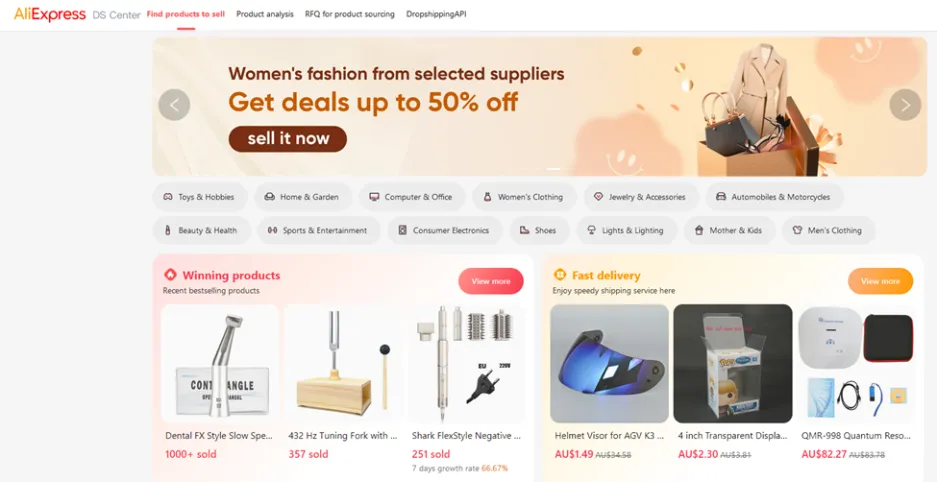How to set up your AliExpress dropshipping business
Last updated: 12.10.2024
Discover the essential steps to launch and grow your AliExpress dropshipping business
Key takeaways
- Marketplace sellers in Australia, New Zealand and other countries can use AliExpress to dropship products
- There is no MOQ for dropshipping from AliExpress
- Order the product yourself so you have first-hand knowledge of the customer experience
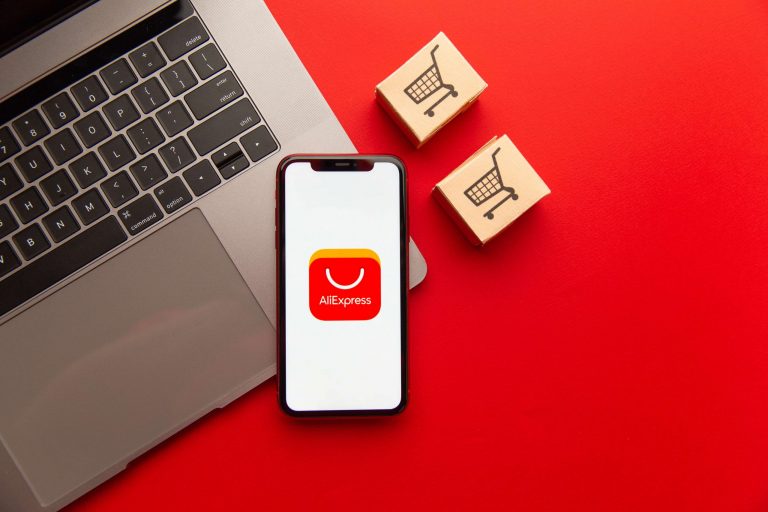
Importing from China can be a good opportunity for e-commerce businesses to source goods at reduced costs.
But what if you don’t have the upfront capital for bulk orders or storage space for wholesale stock? That’s where dropshipping comes in.
While there are several ways and platforms to dropship from, we explore how to dropship from AliExpress in this in-depth guide. Keep reading to learn more.
Table of Contents
What is AliExpress?
AliExpress is a global retail marketplace based in China. It was founded in 2010 by Alibaba, the Chinese multinational company that also owns Alibaba.com, Tmall, Taobao and various other subsidiaries. Businesses located in China list their products on AliExpress to reach a global customer base.
While customers can directly buy products from AliExpress, marketplace sellers in Australia and other countries can use AliExpress to dropship products.
How does AliExpress dropshipping work?
AliExpress dropshipping is a retail fulfillment method where you don’t keep an inventory of the products you sell. When a customer places an order, you purchase the product from an AliExpress dropshipper who is then responsible for packing and shipping the product directly to the customer.
You act as the main storefront that customers can visit and place orders from. You charge the customer and the AliExpress dropshipper charges you.
Your profit = What you charge the customer
- What the dropshipper charges you
- Online store maintenance costs (Marketplace listing fees, website hosting fees, marketing fees, currency conversion costs)
If you are listing dropshipped products on marketplaces, you must be aware of each marketplace’s dropshipping rules before you list your products.
For instance, this is Amazon Australia’s dropshipping policy:
To become a dropshipper selling on Amazon AU, you need to:
- Be the seller of record of your products
- Identify yourself as the seller of your products on all packing slips and other information included or provided in connection with them
- Be responsible for accepting and processing customer returns of your products
- Comply with all other terms of your seller agreement and applicable Amazon policies
Pros and cons of AliExpress dropshipping
Some of the main advantages of dropshipping from AliExpress include:
Cost-effective: Many AliExpress sellers are wholesalers or distributors, offering products at cost-effective prices. Dropshipping also involves a small upfront expenditure since you don’t need to order bulk products in advance and maintain inventory.
Wide range of products: You can easily find unique products on AliExpress that align with the needs of your target customers. Trending products appear quickly on AliExpress due to China’s streamlined manufacturing sector. If you have recently seen viral products on TikTok or Instagram, there is a big chance you will find them on AliExpress.
Experienced and reliable suppliers: AliExpress sellers have experience in handling global dropshipping. They are already aware of the international shipping guidelines and dropshipping policies of different marketplaces. Of course, you need to ensure you are partnering with reliable suppliers that have previous experience and positive reviews on AliExpress.
No minimum order requirements: There is no MOQ for dropshipping from AliExpress. You can even place an order for a single product to get dropshipped to your customers directly.
There can also be some drawbacks of dropshipping from AliExpress
Longer shipping time: Shipping from China can take 5-15 days, depending on your customers’ locations. You can choose a faster shipping option, but it can be more expensive and decrease your margins.
Language barrier: Since most product suppliers on AliExpress are based in China, they may only have a basic understanding of English which could lead to communication issues. Although, this can be easily rectified by hiring an interpreter or using a translator.
Currency conversion costs: When you have a dropshipping agent in China and customers across multiple countries, currency conversion costs can quickly stack up and affect your profit margins.
- Open 15+ local currency accounts and get paid like a local
- Pay suppliers, partners and staff worldwide in 100+ currencies
- Collect payments for free from 130+ marketplaces and payment gateways, including Amazon, Etsy, PayPal and Shopify
- Take control of spending with the World Card, a business expense card that saves you more with 1% cashback. Learn more
- Save with competitive exchange rates on currency conversions and transfers
- Lock in exchange rates for up to 24 months for cash flow certainty
How to dropship with AliExpress: Step-by-step guide
1. Find products to dropship
AliExpress has a dedicated section where you can find products available for dropshipping.
Start by looking for products that are high in demand. You can check how many orders have been placed for those products recently or sort the products based on their price and number of sales
Other than that, here are a few other platforms that can help you find popular products to dropship:
- Trend Hunter: Trend Hunter uses data, artificial intelligence and tips from everyday consumers to highlight the latest consumer insights and market opportunities
- Reddit: Reddit helps you discover specific topics within niche communities. These topics can confirm that the problem you aim to solve is actually relevant and important
- BuzzSumo: BuzzSumo can help you identify trending topics on social media platforms such as X and Meta
- Jungle Scout: Jungle Scout gives insights into trending items on marketplaces such as Amazon. There are also data visualisations on historical product sales, rankings and reviews based on the product you’re looking to sell
- Tiktok: You can check the trending reels to find out which products are the most popular on social media
2. Find suppliers (And negotiate prices)
After you have found the products you want to dropship, open the product page to learn about the supplier.
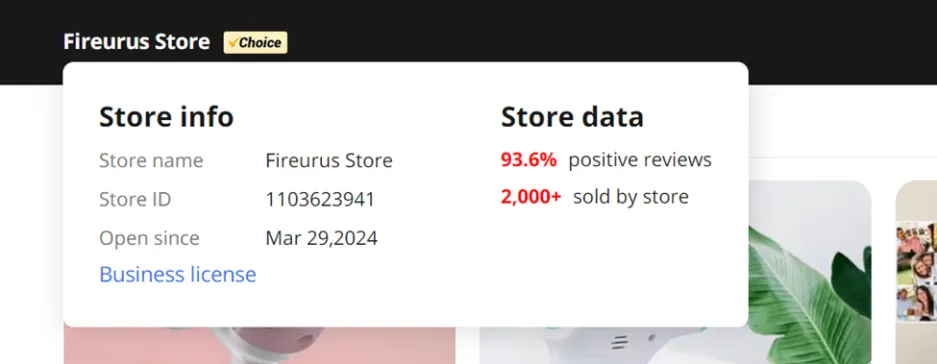
Oftentimes, you will find multiple suppliers selling the same product.
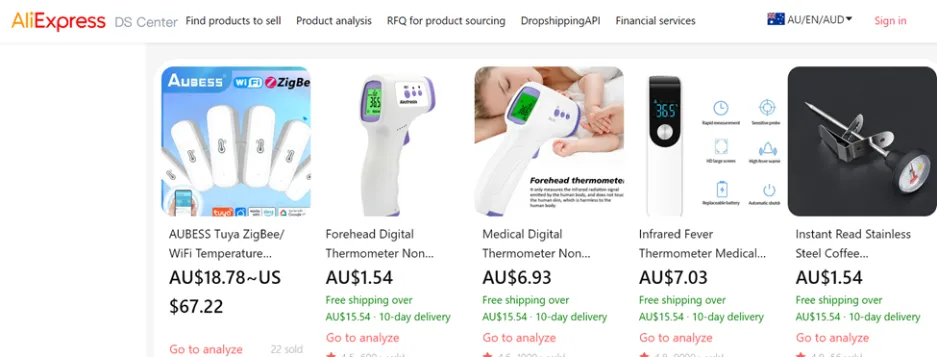
While pricing is not the only factor, it is an important factor to consider when dropshipping because your margins are already very low.
Go to Amazon to check how the other sellers are pricing the same product. To remain competitive, you will have to price your product within the same range.
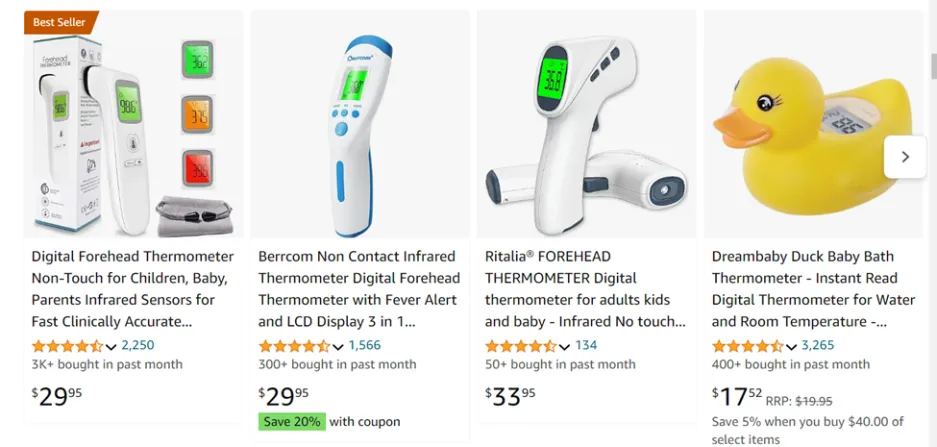
The pricing offered by AliExpress suppliers should be low enough to give you a healthy profit margin (Make sure to factor in other marketing expenses like listing fees and advertising fees). You can also negotiate with suppliers to get the right price for products.
But remember: Just because a supplier offers products at a lower price doesn’t mean they can provide good quality.
Look through the reviews for the product and supplier. You can also buy a sample product to check the quality yourself before you finalise the supplier.
3. Connect your online store to AliExpress
You can use your own website, platforms like Shopify, BigCommerce, and Wix, or plugins like Woocommerce that offer dropshipping integration options.
By integrating your online store with your AliExpress account, you can sync product details and automatically send orders from the store to your AliExpress supplier. Once the products are shipped, you can also share the shipping details with your customers.
If you are listing products on a marketplace like Amazon or eBay, you will have to handle everything manually.
4. Go live and market your venture
Just going live with your online store is not enough. You need to market your products constantly to increase sales.
Many marketplace sellers drive traffic with a combination of paid and organic marketing tactics.
Paid channels include:
- Pay-per-click (PPC) advertising like Google AdWords
- Paid social media adverts
- Affiliate marketing
- Influencer marketing
Organic marketing strategies include:
- SEO website optimisation
- SEO-enhanced articles
- SEO-enhanced blog posts
- Word of mouth
5. Convert site sales into AliExpress orders
If you don’t use a connected app for dropshipping, you’ll need to monitor orders as they come in and create AliExpress orders manually. In principle, this is a simple process:
- A customer orders and pays for a product on your website
- You visit AliExpress and order the product at the wholesale price
- At checkout, you enter the customer’s details in the shipping fields
- The AliExpress merchant sends the product directly to your customer
6. Monitor site and sales performance
Most e-commerce platforms let you track site visits, sales and other stats via your dashboard. You can also use tools like SEMrush and Google Analytics to keep tabs on key performance indicators (KPIs). Track your sales over time and adjust the AliExpress-sourced products you offer to take advantage of seasonal and consumer trends.
Choosing the best AliExpress dropshipping products to sell
When deciding on the best product to source from AliExpress, it’s worth checking through their product categories. Once you’ve chosen your category and the product you want to resell from AliExpress, there are a few points you’ll need to consider:
Branded products: As a dropshipper and reseller, you should not sell products with any brands and logos to avoid infringing on another company’s intellectual property – unless you’re looking to be a licensed reseller. However, being a licensed reseller will impact your margins and overall profitability.
ePacket delivery: Third-party logistics providers can help support faster shipping from local manufacturers in China and Hong Kong to your customers. This is important to consider when choosing a seller on AliExpress, as some sellers offer ePacket shipping and others don’t. It’s best to pick a seller who does, so your products can be shipped more quickly to customers in the US and Europe with local distributors such as UPS, Canada Post and Royal Mail.
Ranking and sales: Pick products that have 4.5-star ratings or higher and choose from sellers who have positive customer reviews. For more insights into the seller, use third-party tools such as AliExpress Seller Check. Additionally, you’ll want to check the number of sales the seller has made. If the seller has sold to many other customers, you’ll know that there’s demand for their product and possibly repeat orders.
Difference in price: Price will always determine what your overall profit margin will be. When looking at a product on AliExpress, check how much the seller has it listed for. Then cross-check the same product on marketplaces such as Amazon. You’ll then be able to determine the average sale price of the product and the overall profit margin you may receive when you start to sell.
Product details: Order the product yourself so you have first-hand knowledge of the customer experience. You’ll be able to see shipping times, whether the product is high quality, how it’s packaged and how to use it. This will help you understand any issues if customers have negative feedback later. You can also ask the seller for additional information before you place an order with them.
Business bank account: On AliExpress, you can choose to purchase products in a selection of specific currencies, including Dollars, Pounds and Euros. On the site, you can configure the currency you want to make purchases in and the price of all items will be displayed in that currency. Many AliExpress sellers will mark up goods in international currencies. You can negotiate and purchase the goods in currencies such as USD or CNH. To do this, you must have an international business bank account with the ability to store funds and payout in multiple currencies.
Boost your AliExpress sales with WorldFirst
With the World Account, you can receive your sales income in 10+ major currencies with the speed and ease of local payments from 100+ marketplaces, including AliExpress, Amazon and Shopify. Plus, you’ll be able to keep funds in your account and use them to pay for goods, services and taxes in 40+ currencies in 130 countries or withdraw them. Open and receive local account details for USD, CNH, SGD, EUR and more with WorldFirst’s business bank account – no overseas address needed.
Disclaimer: The information contained is general only and largely our views. Before acting on the information you should consider whether it is appropriate for you, in light of your objectives, financial situation or needs. Although information has been obtained from and is based upon multiple sources the author believes to be reliable, we do not guarantee its accuracy and it may be incomplete or condensed. All opinions, estimates, mentioned products/services and referenced material constitute the author’s own judgement as of the date of the briefing and are subject to change without notice. WorldFirst shall not be responsible for any losses or damages arising from your reliance of such information.

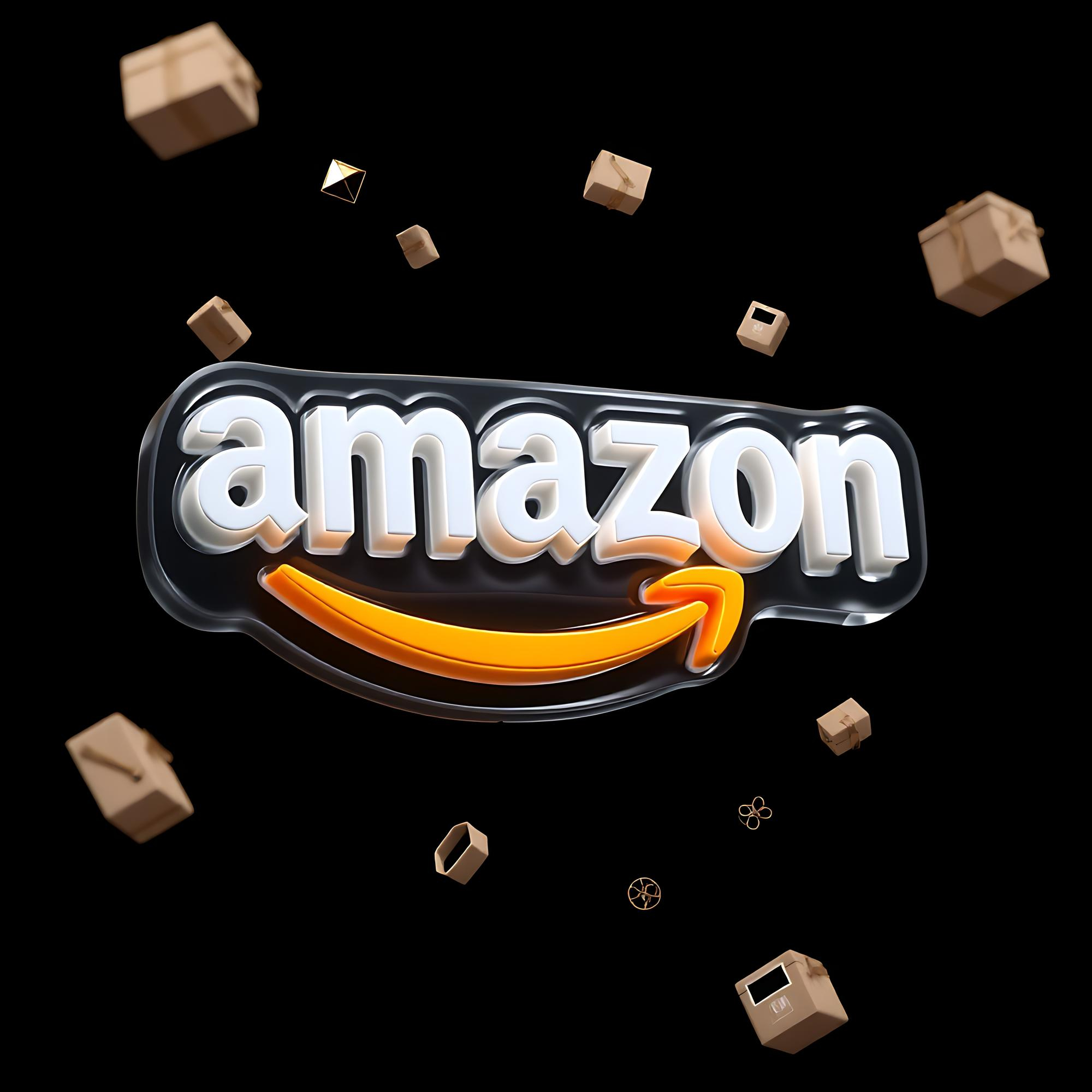
Best selling products on Amazon [2025]
We have compiled a list of the most potentially profitable product categories and the best selling products on Amazon Australia right now.
Jun / 2025
Selling auto parts on eBay: The complete guide
Three auto parts and accessories are sold on eBay every second in the US alone. Take a look at how to sell auto parts on eBay
Jun / 2025
How to find reliable clothing manufacturers in China
Take a look at the top ways to find quality clothing manufacturers in China, including marketplaces, trade fairs and more
Jun / 2025Choose a category below for more business, finance and foreign exchange support from WorldFirst.
- Almost 1,000,000 businesses have sent USD$300B around the world with WorldFirst and its partner brands since 2004
- Your money is safeguarded with leading financial institutions










































